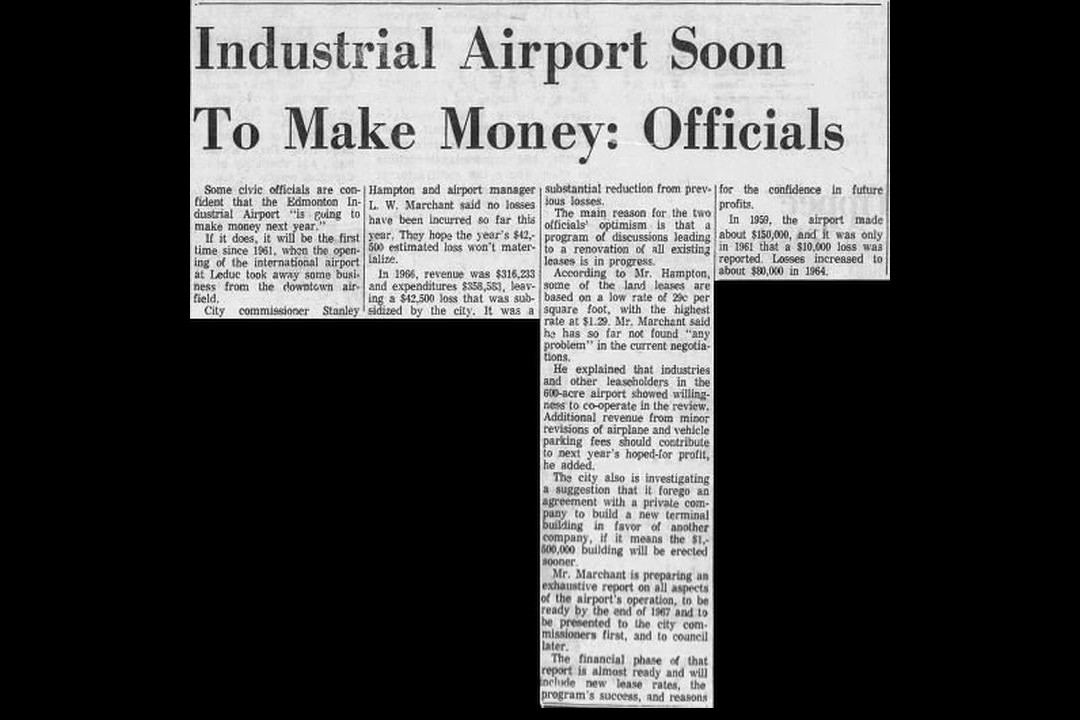On this day in 1967, the fortunes of Edmonton's struggling municipal airport were looking brighter.
The 1960s were a turbulent time for Blatchford Field, but that hadn't always been the case. The airfield wasn't just physically located in the heart of the city. For decades, it had also been the centre of both Edmonton's aviation industry and its history.
Opened in 1927, it was the first licensed municipal airfield in Canada. The ability to fly in people, cargo, and mail not only connected Edmonton to other cities, but also established the city as the gateway to the North. That link only grew stronger during the Second World War, when Blatchford served as a vital part of the Northwest Staging Route. During the war years, Allied forces used the airfield to transfer thousands of aircraft and supplies through Edmonton to support the Soviet Union and other European allies.
Following the war, Blatchford's runways remained busy. A growing oil and gas industry meant more people were flying to and from Edmonton, and the airfield was also used as a stopover for some American routes headed across the Pacific. But it soon faced competition.
There have been growing calls for another, larger airport to handle Edmonton's increasing air traffic. That movement gained momentum after a crash at Blatchford Field, which killed both pilots involved. Edmonton's mayor at the time, William Hawrelak, said Blatchford's runways were not long enough. An investigation into the crash agreed runway length was a factor.
In 1960, the Edmonton International Airport was opened, with runway lengths more suited to heavier planes. It almost meant the end of Blatchford. The original plan was to close Blatchford in 1963, when the EIA's passenger terminal was finished, but it ultimately remained open. The airfield struggled with profitability for most of the next decade, but it found a valuable niche. While it couldn't match the scale of the EIA, its central location offered convenience for some business travellers, and urgent cargo.
The 1980s and '90s, however, saw less traffic coming into Blatchford. Massive jumbo jets were becoming common for air travel. Blatchford's runways were too short to handle them, and the surrounding towers in Edmonton's downtown presented another limiting factor. In 1995, a plebiscite was held to determine the airport's future. Voters supported keeping the airport open but moving all scheduled passenger flights to the EIA. The airport remained open for things like private aviation, training, charter flights, and medical flights.
In 2009, city council voted to fully close the city airport. There was talk of an attempt to force another plebiscite, but it failed to materialize. In 2013, a privately owned Cessna became the last plane to take off from Blatchford Field before it officially closed. It wasn't the last one to land there, though, as a small plane made an unplanned landing in 2015 after a mechanical failure.
The land that once hosted Canada's first licensed airfield was divided in several ways. Some was granted to the Edmonton Aviation Museum, and some was offered to NAIT to allow it to expand. Much of it was set aside to develop the neighbourhood of Blatchford, planned as a carbon-neutral community for about 30,000 people. The project has experienced delays and roadblocks for roughly a decade, though construction is continuing to progress. In the meantime, Edmonton's International Airport has continued to expand to nearly 7,000 acres, and it is aiming to attract visitors as an airport city in its own right.
This clipping was found on Vintage Edmonton, a daily look at Edmonton's history from armchair archivist Rev Recluse of Vintage Edmonton.

